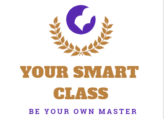Introduction
Physical Education (PE) is an integral part of education that aims to improve the physical, mental, emotional, and social well-being of individuals. It is not limited to physical fitness and games but extends to developing discipline, teamwork, leadership, and positive lifestyle habits. Understanding the objectives and purposes of physical education helps us realize why it is considered a vital component of modern education systems.
Objectives of Physical Education
The main objectives of physical education can be categorized into different dimensions:
1. Physical Development
The foremost goal of physical education is to ensure optimal physical growth and fitness. Regular physical activities strengthen muscles, improve posture, enhance flexibility, and develop endurance. It also helps in maintaining body weight and preventing lifestyle diseases such as obesity, diabetes, and hypertension.
2. Motor Skill Development
Physical education trains individuals in fundamental motor skills like running, jumping, throwing, and catching. It also enhances coordination, balance, agility, and reaction time, which are essential for both daily activities and sports performance.
3. Mental Development
PE contributes to mental sharpness and cognitive abilities. It improves concentration, decision-making, problem-solving, and critical thinking skills. Sports and games stimulate brain functions, increase alertness, and reduce academic stress.
4. Social Development
Team games and group activities promote cooperation, leadership, fair play, and empathy. Physical education fosters positive social interaction, communication skills, and respect for others. It teaches students to handle success and failure gracefully.
5. Emotional Development
Physical activities act as a natural stress reliever. Through games and exercises, individuals learn emotional control, patience, tolerance, and self-confidence. Participation in sports helps in overcoming anxiety, depression, and loneliness.
6. Moral Development
Physical education nurtures values like honesty, discipline, teamwork, and respect for rules. Following the spirit of sportsmanship encourages students to develop a moral character that extends beyond the playground into real life.
7. Health Awareness
Another objective of physical education is to spread awareness about healthy living. Students learn about nutrition, personal hygiene, fitness routines, and the importance of avoiding harmful substances like tobacco and drugs.
8. Recreation and Leisure
Physical education provides opportunities for recreation and relaxation. Engaging in physical activities during leisure time helps refresh the mind, reduces fatigue, and creates a balanced lifestyle.

Purposes of Physical Education
While objectives explain “what to achieve,” the purposes of physical education define “why it is important.” Some of the key purposes include:
1. Holistic Development
The ultimate purpose of physical education is to ensure the all-round development of individuals – physical, mental, social, and emotional. It helps in shaping a well-balanced personality.
2. Preparation for Daily Life
PE equips individuals with the stamina, strength, and coordination necessary for everyday tasks, reducing fatigue and increasing efficiency in personal and professional life.
3. Foundation for Lifelong Fitness
By instilling healthy habits early, physical education ensures that individuals maintain fitness and wellness throughout life. It helps prevent lifestyle disorders and improves life expectancy.
4. Character Building
Through discipline, sportsmanship, and teamwork, PE serves the purpose of building strong moral character and teaching individuals to respect others.
5. Stress Management and Emotional Balance
One of the vital purposes of physical education is to provide stress relief and emotional stability in an increasingly competitive world. It encourages relaxation and positivity.
6. Promotion of National Integration
Sports and physical activities bring together individuals from different cultures, religions, and regions, promoting unity, harmony, and national integration.
7. Encouragement of Professional Opportunities
Physical education also serves as a foundation for careers in sports, fitness training, physiotherapy, physical education teaching, coaching, and health sciences.
Conclusion
The objectives and purposes of physical education go far beyond physical training. It builds fitness, sharpens the mind, develops emotional stability, strengthens social relationships, and prepares individuals for a healthy and disciplined lifestyle. By integrating PE into school curricula and daily life, we can ensure the growth of healthier and more responsible citizens.
Share this:
Discover more from YOUR SMART CLASS
Subscribe to get the latest posts sent to your email.








